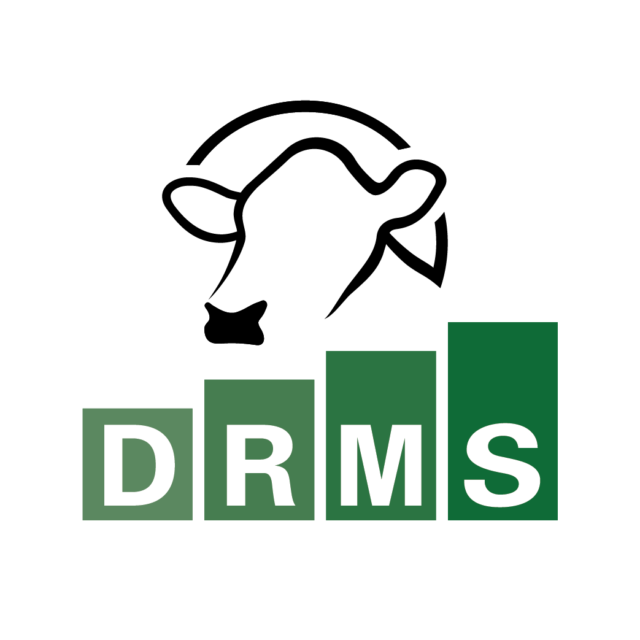Since October 2008, the USDA’s Commodity Credit Corporation (CCC) has purchased approximately 110 million pounds of non-fat dried milk (NFDM).
In terms of milk equivalency, it represents almost 1.25 billion pounds of skim and milk fat solids. At this rate, which everyone says will continue, by September of this year the total purchases will be the equivalent of about 6 billion pounds of milk.
As prices continue to deteriorate, additional purchases of cheese and butter could also add to these numbers.
To put this into perspective, if the CCC was a milk-producing state it would rank 10th right behind New Mexico. The CCC under the dairy price support program is purchasing the product. The CCC can purchase all powder offered it under published standards at 80 cents per pound.
If powder inventories exceed 400 million pounds, then the price drops to as low as 60 cents. Any government intervention brings good and bad. The long-term problem of unlimited price support is that the purchases in the warehouses stand as a major competitor of supply. As an alternative to buying milk, some users can purchase skim milk powder instead.
With this in mind, the law requires the USDA not sell the powder for less than 110 percent of the purchase price, or 88 cents a pound. Powder purchases support dairy prices because they help floor the minimum class prices in the California and FMMO pricing systems. When sales are being made to CCC, the California Department of Food and Agriculture (CDFA) captures those prices for the California Weighted Average Price (CWAP). The CWAP is used to compute the California Class 4a price as well as the prices for Classes 2 and 3.
The National Agricultural Statistics Service (NASS) captures those sales prices, and the volume largely dictates the average powder price. The USDA uses those to compute the Federal milk marketing order prices for Class IV and, by extension, Class II.
For the week of Dec. 19, 2008, 8.2 million pounds was sold to CCC, resulting in an average price of 84.16 cents per pound for California. Those same purchases represented 30 percent of the sales reported to NASS and used in the Federal Milk Marketing Order (FMMO) formulas, which had an average price of 83.93 cents.
Both of these numbers show that the market price of powder, aside from CCC purchases, is approaching the CCC price. The quantities of CCC purchases are reported each Friday by USDA in the Dairy Market News Weekly Report available at the USDA’s Dairy Programs website (http://www.ams.usda.gov/mnreports/dywweeklyreport.pdf). CDFA information is found at its website (www.cdfa.ca.gov/dairy/dairy_data.html). Accumulations of milk powder pose a threat to producer prices because until those inventories are cleared, the competitive price for powder will stay in range of 80 to 88 cents, which is too low for producers.
Buyers of powder can always purchase powder at 88 cents from the CCC. But accumulations pose a problem for the CCC. In addition to the cost of acquisition, there is also the cost of storing and keeping the powder in condition, and the risk of deterioration.
Back in 2003 when inventories of powder exceeded a billion pounds, CCC explored all kinds of ways to unload the powder including pilot programs to make casein, animal feed and other methods. A large amount of powder went out of condition and had to be disposed. Milk products are not the only products that the USDA purchases. In addition to purchases of products for commodity support programs, it buys products for the various food programs that it oversees and supplies.
These include school lunch programs as well as assistance to food banks. Today those needs are large and growing. Some of these foods are commodities, and some are finished products purchased on the open market. Few individuals could find use with a bag of NFDM, but they could certainly use the prepared mixes and foods that include it. Using its growing inventory of NFDM, the USDA entered into an agreement with a Memphis web-based trading company to, and this is according to USDA and that company, barter the powder for other food products that the USDA needs.
The program would work as follows: The USDA would transfer title to the powder to the company by endorsing warehouse certificates for the nonfat dry powder. The trading company will auction the product to the highest and winning bidders. Next the company will place the proceeds of the auction (net of sales commissions) into an escrow account for the benefit of the USDA. From time to time, the USDA will identify other food commodities for domestic food donation programs. The company would then conduct a “reverse auction” to acquire those commodities for the USDA, awarding sales to the lowest bidders.
The company will apply the funds in the escrow to purchase these commodities. Fearing that under this arrangement the USDA will sell the products for less than 88 cents, NMPF brought suit in Chicago in early December to stop the trading. In its complaint, NMPF argued that the law requires the USDA to sell at no less than 110 percent of the support price and that the prices traded on the platform will be lower than that. NMPF argued that the auction sales of powder would cause the market price for powder to fall even further. In affidavits filed with the court, it argued that the impact would be more than $50 million in lower producer prices, though it provided no explanation of how that figure was derived other than a general statement.
One of the benefits of an organization like NMPF is that it provides a check to balance government agency actions and keep them honest and within the law. By reading its complaint, NMPF seems to have caught the U.S. Secretary of Agriculture in violation of the law. That is, without a minimum bid requirement of 88 cents, there should be no sales. In addition, NMPF appears to be right as a matter of policy. Allowing powder to trade at less than 80 cents would flood the market with cheap product and depress producer prices. But those sales are not reported to NASS or the CDFA so they would not be a factor in the minimum prices producers receive.
Plants would never be faced with selling at lower than the CCC price because they always have a market at 80 cents. Plants could sell forever at 80 cents with the government reselling at a cheaper price while producers received the minimum prices that 80 cents would yield. So the real exposure to producers is the difference between the 83 to 85 cents on powder and the 80-cent support price. On 20 percent of our milk in Class II and IV, the 3 to 5 cents per pound or 30 to 50 cents per hundredweight would be 6 to 10 cents on blend or overbase. Nothing insignificant! But at some point this powder will come back on the market, either now costing a few cents or months later holding the price at 88 cents.
Which is worse is impossible to know. Where NMPF’s case will have its biggest hurdle is that the USDA has broad authority in administering the government’s food programs, so broad that it could probably trump the language regarding the 88 cents. In the end, the question will be whether the court sees the sale as a barter-for-food program to supply the government’s food programs or a simple sale of the product. If it is a barter, the USDA wins; if it’s a sale, NMPF wins. Ties go to the government. For producers, the impact, as explained above, will not be very dramatic over time.
On the other hand, if the USDA barters the powder for other foods in its food programs, the inventory of powder sitting there as a damper to slow down recovery of prices disappears while producers still have the benefit of minimum pricing under the price support program. Then when the markets recover, and they will, having no inventory in the CCC will mean that recovery of those prices will be much faster. Less inventory means the support price remains at 80 cents and does not drop to 60 cents.
A hearing on the request to stop the sale is scheduled for Jan. 21 in Chicago. At that hearing, the court will hear both sides of the story and possibly some other interested parties such as consumers and food banks. It will then make a decision. This is perfect civics case. Congress passes a law; the president, through a cabinet member, administers the law; and the courts are called upon to referee disputes between stakeholders and the government. It is not swift nor clear, but it works and in the end right usually prevails. PD
Ben Yale
Attorney at Yale Law Office
ben@yalelawoffice




